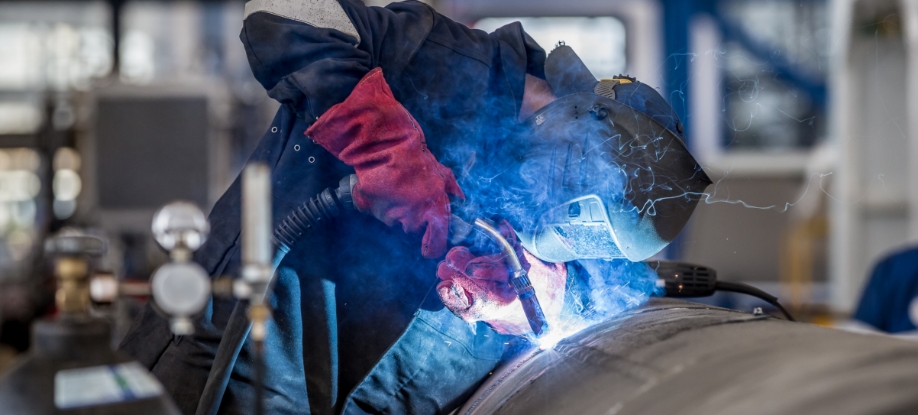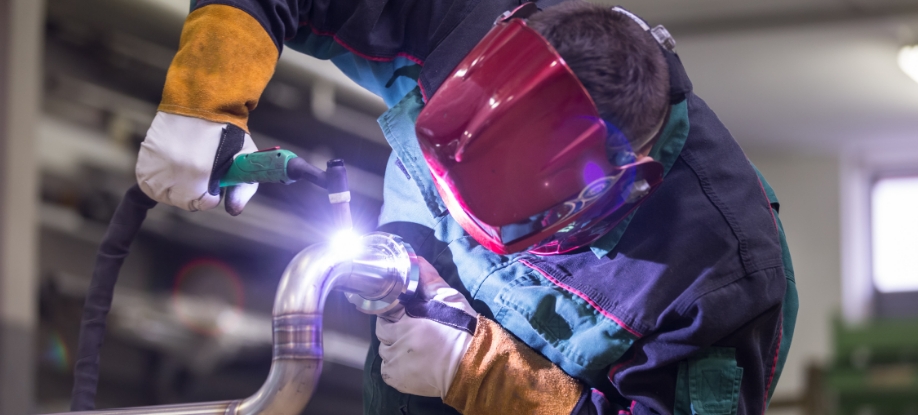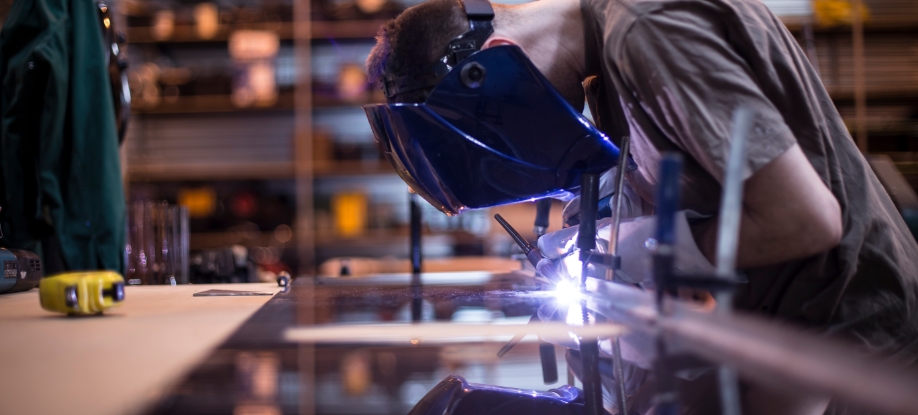How to Weld Stainless Steel with ER308/308L/308LSi Wire
Aug 31st 2023
In this brief guide, we’ll take the mystery out of welding stainless steel with ER308/308L/308LSi welding wire. If you're looking to tackle stainless steel welding projects, understanding the ER308/308L AWS designation is crucial. This article will delve into the significance of ER308/308L/308LSi, the grade of stainless steel it can be used on, best practices for welding stainless steel, and valuable tips on how to utilize ER308/308L/308LSi welding wire for MIG welding stainless steel. Let's dive in and unlock the secrets to successful stainless-steel welding with ER308/308L/308LSi wire so you can achieve top-notch results.
What Is ER308/308L/308LSi Stainless-Steel Welding Wire?
ER308/308L/308LSi welding wire is a specialized type of welding consumable designed for welding stainless steel materials. This welding wire is widely used in various applications where excellent corrosion resistance and mechanical properties are essential, making it a popular choice for projects involving fabrication, construction, automotive, and more. ER308/308L/308LSi welding wire is versatile and capable of delivering exceptional weld quality, making it one of the most popular filler metal solutions for stainless steel applications.
AWS ER308/308L Classification Meaning
The American Welding Society (AWS) designates welding wire types into numbered classifications. But what do ER308 and ER308L and ER308LSi classifications stand for? Each part of the classification stands for a specific attribute that welding wire or filler metal possesses:
- E: Electrode - This means the wire functions as an electrical conductor in welding.
- R: Rod - A rod can be used as filler metal in various applications. Rods don’t have to be electrodes.
- 308: Alloy - This displays the type of stainless steel alloy.
- L: Low carbon content - Some stainless-steel welding wire may have an "H" designation instead, which would indicate high carbon content.
- Si: High silicon content. This designation may be added to welding wire with higher silicon content, which acts as a deoxidizer and helps the weld puddle flow or wet out.

What Is the Difference Between ER308 and ER308L Wire?
ER308 and ER308L are widely used stainless-steel welding wires for joining and overlaying base metals with similar compositions, like 304L stainless steel. The key difference between the two lies in their carbon content.
ER308L contains minimal carbon, significantly reducing the risk of intergranular carbide precipitation during welding. This property enhances resistance to intergranular corrosion without the use of stabilizers like niobium or titanium. ER308L is an excellent choice for applications where avoiding intergranular corrosion is crucial, particularly in industries such as chemical, petrochemical, food and drink preparation, and applications requiring high atmospheric corrosion resistance or at cryogenic temperatures.
ER308 wire is preferred over ER308L in situations where intergranular corrosion resistance is not a primary concern, making it suitable for welding base metals with similar compositions. Additionally, ER308 may be preferred when joining dissimilar metals or in high-temperature applications due to its higher carbon content, which can improve weld strength and performance.
However, for applications where intergranular corrosion resistance is crucial, especially in corrosive environments, ER308L should be the preferred option. Careful consideration of the specific welding requirements and base metal properties will help determine the most suitable choice between ER308 and ER308L welding wire.
How is ER308LSi Welding Wire Different Compared to the Others?
Another option for stainless-steel welding is ER308LSi welding wire. Like ER308L, this filler wire also contains low carbon, but it has a higher level of silicon, which acts as a deoxidizer that enhances the flow and wetting of the weld puddle. The increased silicon content in ER308LSi improves the wetting of the weld puddle, making it more user-friendly in practice.
Ultimately, the choice between ER308/308L and ER308LSi depends on selecting the correct wire that matches the base metal and meets the specific application requirements. NOTE: NS ARC's own ER308LSi welding wire is called ER308LHS. Understanding these differing characteristics and advantages can help in achieving optimal welding results.
Which Grade of Stainless Steel Is Right for ER308/308L/ER308LSi Wire?
Stainless steel comes in five distinct grades, classified based on their unique material properties and specific welding demands. These grades include austenitic, ferritic, martensitic, precipitation hardening, and austenitic-ferritic (duplex). Each grade exhibits its characteristic material properties, which play a crucial role in determining the appropriate welding approach for optimal results. ER308 and ER308L and ER308LSi wires are used predominantly to weld austenitic stainless steel. Learn more about the different characteristics of each stainless steel grade and which welding wires work with them through our in-depth article: How Welding Affects the Properties of Stainless Steel.

What Are the Properties of Austenitic Stainless Steel?
Austenitic stainless steel, including the widely used 300 series, is renowned for its exceptional corrosion resistance and malleability. Its composition typically falls within the range of 16-26% chromium (Cr) and 8-22% nickel (Ni). For instance, Type 304 contains around 18% Cr and 10% Ni, while Type 316 consists of approximately 17% Cr and 11% Ni. This grade possesses a non-magnetic property and adopts a face-centered cubic (FCC) crystal structure. Renowned for its weldability, this alloy can be welded using various arc welding processes, such as MIG and TIG. Below, we’ll dive deeper into the main qualities of austenitic stainless steel that make it unique for use with ER308/308L/ER308LSi wire.
Low Thermal Conductivity
Austenitic stainless steel exhibits relatively lower thermal conductivity, resulting in a higher heat input during the welding process. To avoid overheating and distortion of welded components, precise control of welding parameters is crucial. Moreover, this type of stainless steel is non-hardenable upon cooling, reducing the necessity for pre- or post-weld heat treatment.
Hot Cracking Sensitivity
Austenitic stainless steel can be susceptible to hot cracking, especially when impurities like sulfur and phosphorus infiltrate grain boundaries. To address this concern, filler materials with a small ferrite content are commonly employed. The presence of ferrite helps form ferrite-austenite grain boundaries, providing protection against the penetration of sulfur and phosphorus compounds, thus reducing the risk of hot cracking. Furthermore, minimizing heat input and implementing appropriate preheating techniques can effectively mitigate the likelihood of hot cracking.
Carbide Precipitation
While welding austenitic stainless steel, it is essential to be aware of the potential for carbide precipitation in the heat-affected zone (HAZ). This phenomenon can result in sensitization and subsequent intergranular corrosion. To prevent this, stabilization techniques can be employed, such as using filler materials with titanium or niobium, which react with carbon and ensure that all the chromium remains in solution to maintain corrosion resistance. Additionally, post-weld heat treatment, like solution annealing, can be utilized to restore the material's corrosion-resistant properties.
Applications for Austenitic Stainless Steel
Austenitic stainless steels find widespread applications in industries like aerospace and automotive, where their strength and corrosion resistance are highly sought after. To ensure optimal weld performance, it is common practice to use welding wires with compositions that match the base material. However, certain alloys may require the inclusion of a microstructure with some ferrite to prevent hot cracking. For instance, when welding Type 302 and Type 304 alloys, a Type 308 filler metal is recommended, while Type 321 requires a Type 347 filler metal.


Tips for MIG Welding Stainless Steel with ER308/308L/ER308LSi Wire
When MIG welding stainless steel, several essential tips can help achieve high-quality welds.
- First, allow sufficient time for the weld pool to form and then maintain a consistent pool size throughout the welding process to ensure uniform and finished welds.
- For optimal penetration and reduced splatter, hold the MIG weld gun at an angle of approximately 5 - 15 degrees, avoiding horizontal and vertical angles that may lead to undercut of the base material.
- Balancing the travel speed is crucial; welding relatively quickly helps avoid heat concentration, but excessive speed can result in narrow beads.
- It's recommended to employ a push technique and stringer bead to enhance weld appearance and penetration.
- To protect against oxidation and contamination, utilize post-welding shielding gas flow until the weld pool cools down completely. For even better results, hold the MIG nozzle close to the stainless steel for a few seconds.
By following these tips, welders can optimize the MIG welding process for stainless steel, ensuring efficiency, quality, and aesthetically pleasing results.
Discover NS ARC Premium Stainless-Steel Welding Wires
Experience smooth stainless-steel welding with NS ARC Satin Glide® welding wire, the ultimate choice for stainless-steel welding projects. Engineered for superior corrosion resistance, this welding wire creates long-lasting and robust welds that can endure even the harshest environments. Its exceptional weld strength and high-temperature resistance ensure the integrity and reliability of weld joint.
Versatile and easy to use, Satin Glide® is suitable for a wide range of applications, from agricultural equipment and auto body work to automotive exhausts, pressure vessels, and more, making it a go-to solution across various industries. Designed to deliver precision and efficiency, Satin Glide® is also compatible with mechanized, robotic, and semi-automatic welding methods, providing seamless integration into your facility’s welding processes.
Learn more about the different types of welding wires used for welding stainless steel to become a master of the material!
Learn MoreDISCLAIMER: This information is descriptive in nature and not purely prescriptive. Refer to your own welding machine’s user manual for proper settings and consult a welding expert for support.


